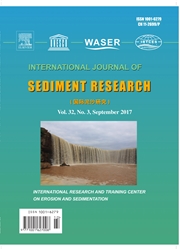

 中文摘要:
中文摘要:
在纽西兰金丝雀发生在 Klapperhorn 山上的碎片流动在山的底在加拿大的落基山脉姿势把重要危险传递给铁路操作。尺寸(体积) 和这些碎片流动的旅行距离在估计风险到铁路起一个重要作用。GIS 分析,和地工作的 airphoto 解释在在轨道哩数 54.0 和 54.3 点定位的二碎片流动上被承担。这二个碎片流动事件的特征被分析,包括碎片流动路径形态学和事件行为。他们的尺寸和旅行距离在不同开始条件下面用一个实验统计的模型(UBCDFLOW ) 被估计。他们铁路桥牌上的潜在的影响用桥牌阻塞比率被评估。
 英文摘要:
英文摘要:
Debris flows occurring on Klapperhorn Mountain in the Yellowhead Pass in the Canadian Rocky Mountains pose a significant hazard to railway operations at the base of the mountain. The size (volume) and travel distance of these debris flows play an important role in assessing the risk to the railway. GIS analysis, airphoto interpretation together with field work were undertaken on two debris flows located at track mileage 54.0 and 54.3. Characteristics of these two debris flow events were analyzed, including debris flow path morphology and event behavior. Their sizes and travel distances were estimated using an empirical-statistical model (UBCDFLOW) under different initiation conditions. Their potential impact on the railway bridge was evaluated using a bridge blockage ratio.
 同期刊论文项目
同期刊论文项目
 同项目期刊论文
同项目期刊论文
 期刊信息
期刊信息
